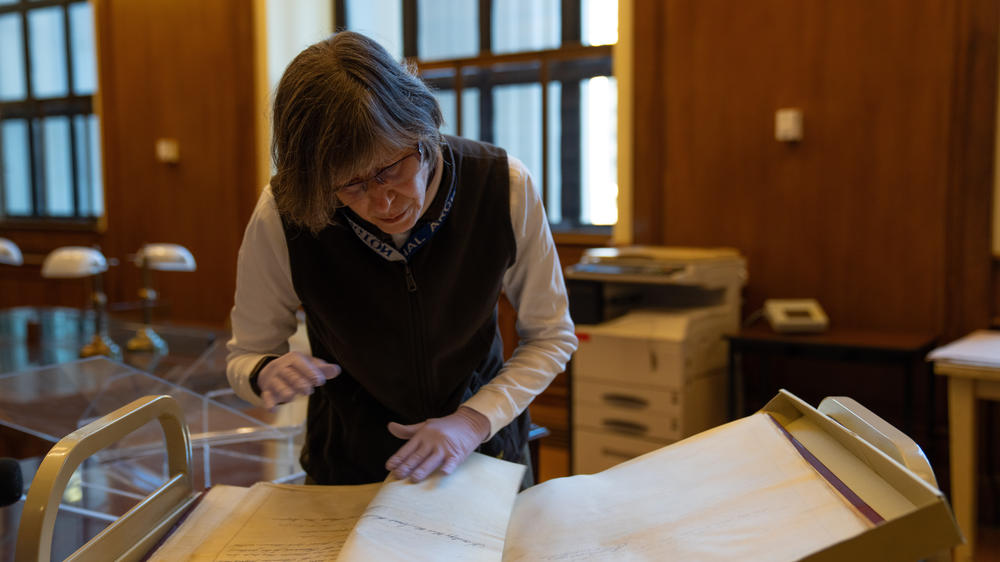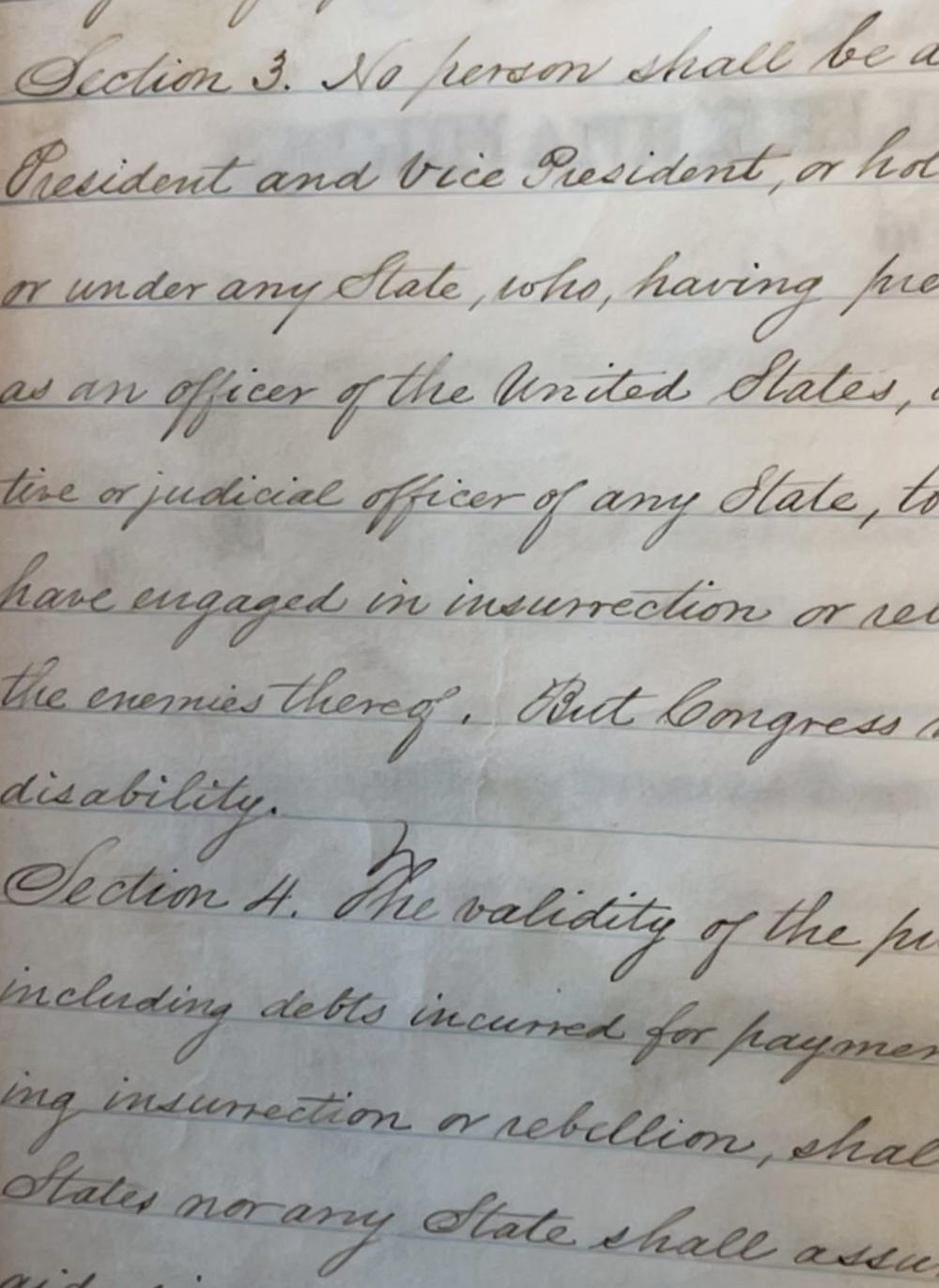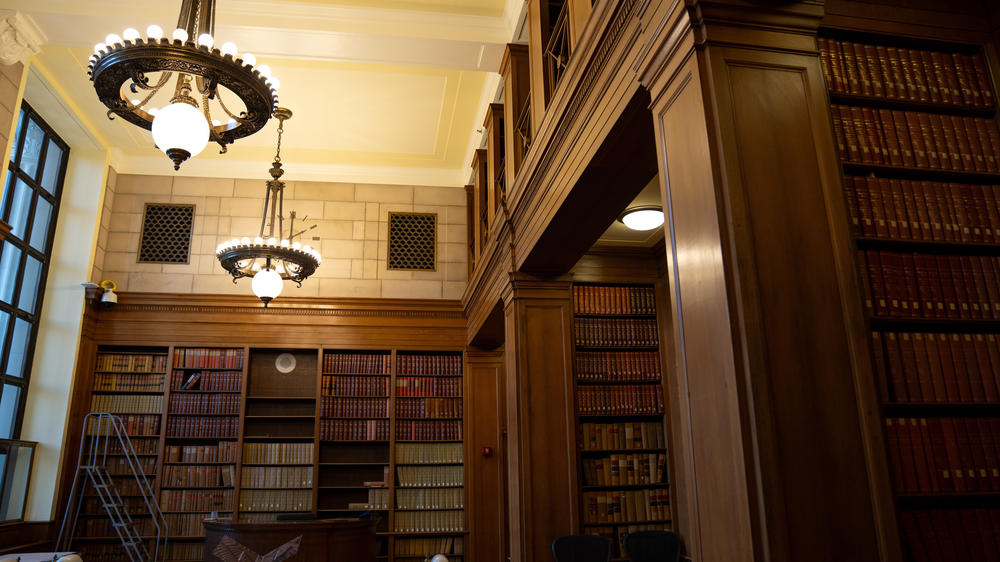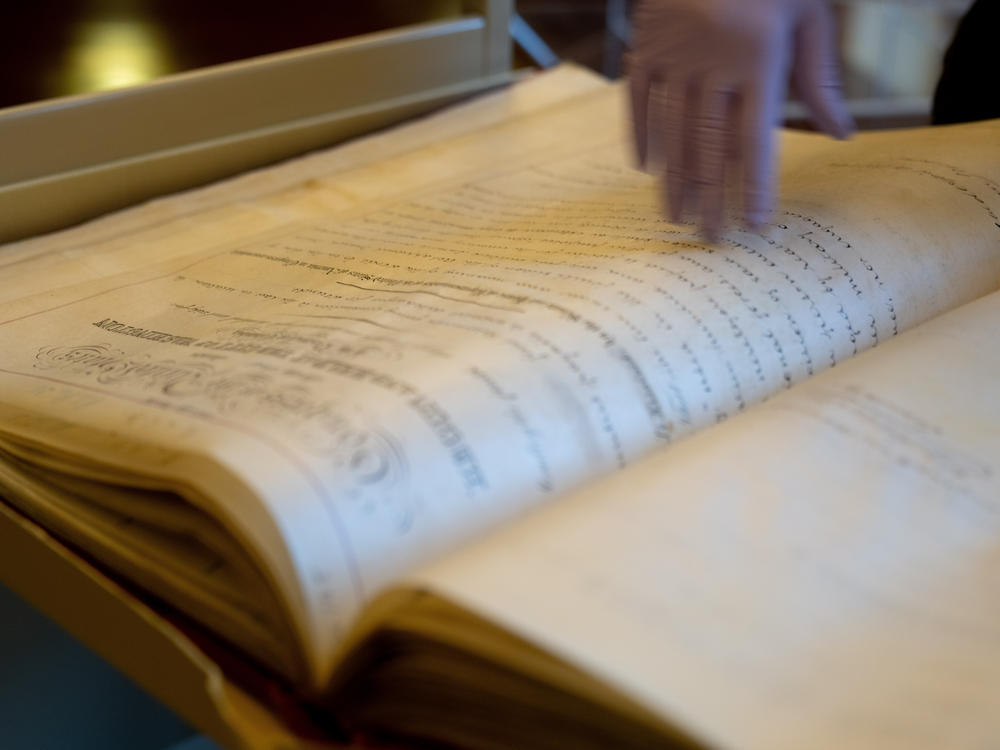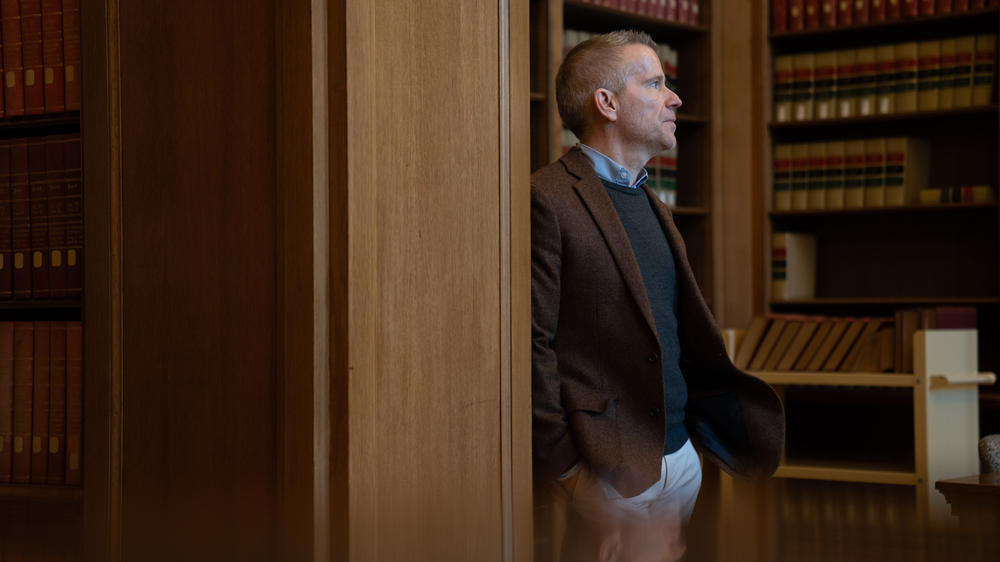Section Branding
Header Content
I went hunting for the 14th Amendment, the document that could bar Trump from ballots
Primary Content
The cursive strokes of iron gall ink on parchment sent my eyes on a roller coaster ride through American history — swoop, swish and a loop-de-loop.
As I read from the stretched animal hide, I blinked twice to recalibrate my brain, which is used to clean, crisp digital fonts — not the wispy script that was a few feet in front of me. So I took my time looking over the original 14th Amendment, wondering how these century-old words could shape the coming presidential election.
"Section 3. No person shall be a Senator or Representative in Congress, or elector of President and Vice President, or hold any office, civil or military, under the United States, or under any State, who ..."
During its 157-year existence, this Civil War-era revision to the U.S. Constitution hasn't garnered the same attention as its older cousins: the Declaration of Independence, the U.S. Constitution and the Bill of Rights.
It didn't even get a cameo in the Nicolas Cage adventure romp National Treasure — I checked.
But now, it sits center stage. On Thursday, the Supreme Court will hear arguments over whether Section 3 of the 14th Amendment bars former President Donald Trump from the ballot in Colorado — the outcome of which could upend the 2024 presidential election.
Tracking down history
Finding the 14th Amendment was easier said than done. My search started back in January at the rotunda at the National Archives in Washington, D.C.
I checked every thick glass case — no document. But it was close.
The 14th Amendment used to be on display just beneath the rotunda in an exhibit called "Records of Rights." The public was able to view the document for three months before it was cycled out of the exhibit back in 2013.
So where is the 14th Amendment now?
One side of the National Archives is dedicated to public viewing, while the other side, which faces Pennsylvania Avenue, is dedicated to research and preservation. The 14th Amendment is currently on the research side.
This section is called the "preservation room" in National Treasure. And it's supposedly less secure than the rest of the building. False on both counts — I checked.
But it is where employees care for, preserve and maintain the United States' most cherished documents. And it's for this reason that the National Archives was one of the first buildings in Washington, D.C., to have air conditioning.
After going through an airport-level security check, I finally made it to the viewing room.
Preserving history
I wasn't expecting so much red leather — like a nice old Cadillac interior.
I was chaperoned by Morgan Browning, a senior conservator at the National Archives, who guides me to a large book bound by hot-red leather that contains the 14th Amendment.
And after a few flips through the book — it took a moment because they misplaced the bookmark — Browning finally found it.
"The pages are parchment, which is derived from animal skin," Browning told me. "Once it is dehaired and all the blood vessels, everything, is removed, it is stretched onto a frame."
Browning explained how clerks on Capitol Hill at the time were trained in calligraphy to write newly minted laws and amendments using iron gall ink.
"It was the predominant ink of this era going back into antiquity and was used even up until the 20th century," he said. "It's a mixture of a variety of components: tannic acid, ferrous sulfate, water and then gum arabic, which is derived from the sap of a tree."
Overall, it's an extremely durable substance, but Browning said it is especially sensitive to both light and humidity.
Even as he explained this, I noticed the edges of the 14th Amendment curling just a bit, reacting to its new environment filled with windows and breathing people. It's normally housed in an archival box and a shadow-filled room, but it was brought out for this occasion.
Browning saw the parchment's undulations too, and we said our goodbyes to this historic document that the Supreme Court will soon take up.
"It is all quite thrilling," Browning said, as he put the document away.
